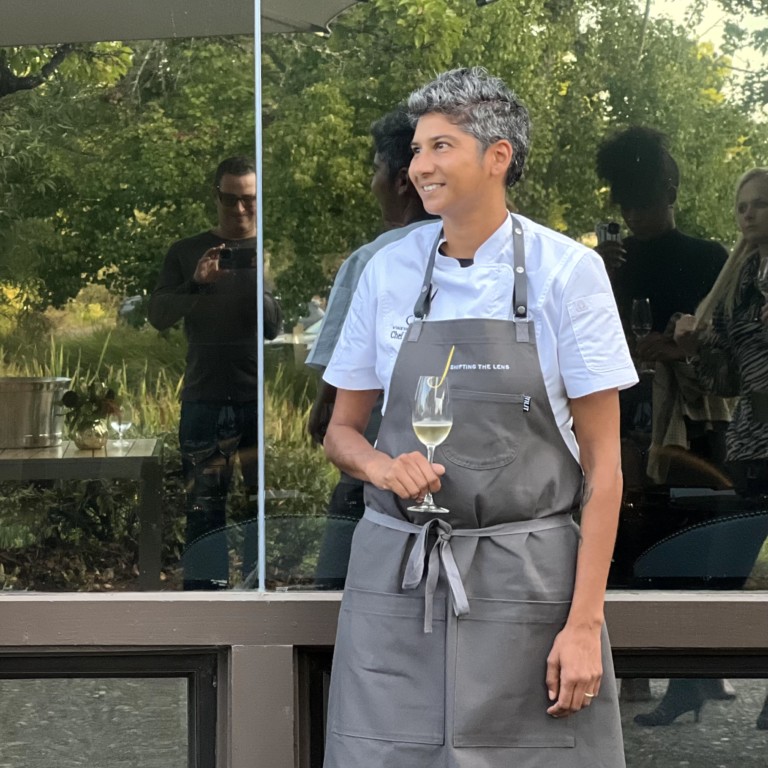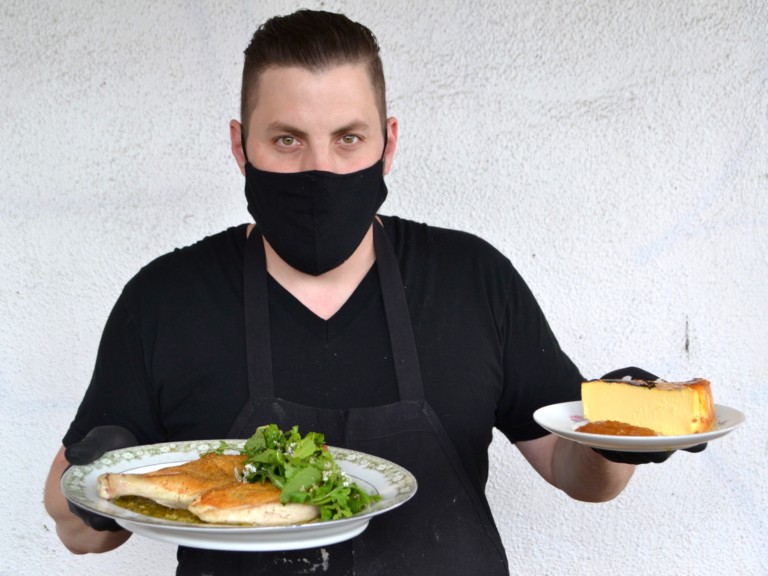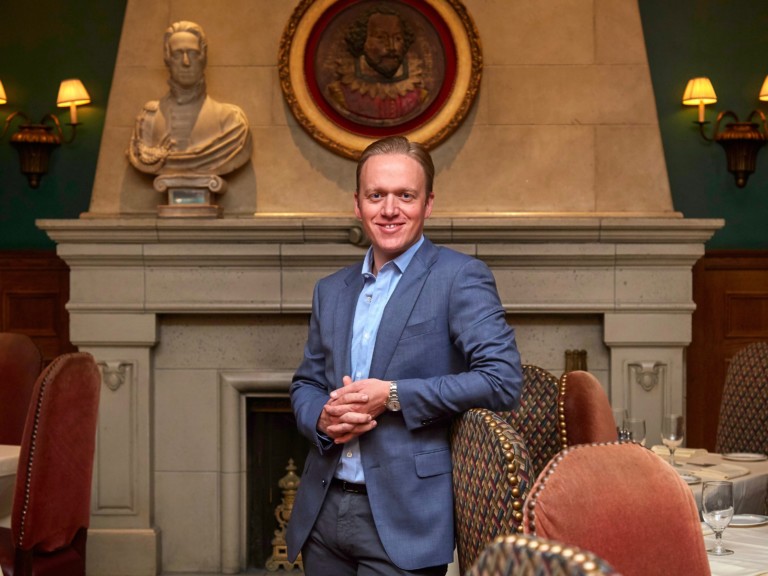Bon Appetit Editor-in-Chief and UC Berkeley graduate Adam Rapoport was in San Francisco to promote Vegas Uncork’d, a 28-event, multiple venue “celebration of wine, food, and spirits” that’s taking place from May 9-12, 2013. He took a break from the action at Hakkasan to share his thoughts on culinary events, home cooking, hiring practices, and San Francisco.
Why is it not enough to just be producing a magazine?
Nowadays, it’s not enough to be a magazine. You have to be a brand. That means doing food events. It means doing a website. It means doing an app. It means doing cookbooks. In our case, we’re doing an HSN cookware line, being involved in television. You’ve got to have these multi-platform extensions. And I think what’s key is, if you’re going to do all these others sorts of extracurricular, ancillary endeavors, how do you make them true to the brand, and true to the vision of the magazine itself? And the magazine is what I think is ultimately sort of the heartbeat. That’s what drives what you do. That’s where the creativity goes, and the ideas originate from. It’s challenging.
I got the job two years ago at Bon Appetit. My publisher, Pam Drucker Mann, she came on at the same time. Our feeling was that we already had this relationship with Vegas Uncork’d. Our feeling was, alright, if we’re going to do this event, how can we make this true to where this magazine going now. The first year, two years ago, we were basically there as visitors. We’d just gotten the job, so we weren’t able to be involved in the planning of it. Last year was the first year we were able to have a say in how the event played out. And I was very passionate that, if we’re going to do this, I want the chefs involved. I want to challenge them. I want to make sure every event has a point, a point of view. I want it to be unique. I want it to be something you can’t do the other 364 days of the year. As an editor, every page that I edit, I think, “What’s the point of this page? Why is this page in this magazine? Why are we doing it?” Because if it doesn’t earn its real estate, it shouldn’t be here. The same thing with a food event.
We did one event with Jean-Georges and his wife in a kind of He Said, She Said cooking luncheon. His wife was cooking Korean food, Jean-Georges was cooking his sort of Asian French food…We had José Andrés showing how to make paella in his wood-fired oven. We had an event with Mary Sue Milliken and Susan Feniger doing a great cooking demo. I just felt like, every event’s got to have a purpose, and every event has to have an editor from Bon App there moderating it, asking questions, keeping it going, keeping it interesting. We did a great dinner with Bobby Flay at Mesa for about 50 people, and I was like, “Alright, Bobby. Get your ass out here. We’re going to ask you questions. We’re going to take questions from the audience. I’m going to grill you. They want access to you. They don’t just want to eat your food. They want access to you as a chef.” That mattered. Let’s make this unique. In terms of Vegas, that’s what we wanted to do. If we’re going to do this, let’s do this right. Let’s make it cool. Let’s make it interesting.
We’re also doing this event, Feast Portland. Last year was the first year, and that was just awesome in terms of being tapped into what matters now in the food world, everything from artisanally cured salumis, to the coffee movement, and mixology. Portland is kind of quintessential American food city, and to get in on that, and to attract all those chefs, all the sort of tattooed cool young chefs who are not attracted to other big food festivals, they were attracted to Feast Portland. And it was such a unique food festival that was unique to that city and what Portland’s all about and what an incredibly vibrant scene in Portland is about. That was a theme we really wanted to get involved in, and that’s the first food festival we’ve done from the ground up, since I took over, and I’m incredibly proud of what that’s all about.
In terms of attending events, are those same things important? What do you look for as an attendee when considering a culinary event?
My feeling is, they’ve got to be fun, and they’ve got to feel special. By special, I mean that they’re not something you’re going to get any other time of the year, or if you’re at this restaurant. You need to have access to the chefs, and what they’re doing needs to have a purpose. It needs to be unique. I think you want to learn something, but not in a didactic, lectured to sort of way. You want to learn while you’re having fun.
What do you look for when you’re hiring a writer or editor at Bon Appetit?
If I’m hiring a writer, you’ve got to have voice. I don’t care where you went to college. I don’t care what your GPA was. I don’t care how impressive your resume looks. Either you can write with a voice or you can’t. There are not a lot of writers who can write with a strong, unique, funny, personality-driven voice. You’ve got to have voice. I’ve found with writers, either you have it or you don’t. I’ve hired people straight out of college who have it. If you don’t have it at 22, you’re not going to have it at 32.
As far as editors, though, there are editors who understand how to craft a page, and understand the architecture of a page, and what makes a magazine dynamic. That’s different from writing. You can have great editors who are not great writers. It’s like a gallery-ist, you curate talent, you understand talent, you nurture them, but it doesn’t mean you’re an artist yourself.
What was the last meal you cooked at home?
On Saturday night, friends came over and I made a lovely roast chicken in a cast iron skillet with some shallots, in a 400-degree oven. So it was super crispy. I took the chicken out, reduced the pan sauce, had the shallots all caramelized, and had baby new potatoes, smashed the new potatoes with butter, olive oil, chopped chives and parsley, and then a bibb lettuce salad with a shallot vinaigrette.
Since we’re in San Francisco, let’s consider the possibility that Rice-A-Roni is not in fact the San Francisco treat. What is the San Francisco treat.
That’s obvious. That would be a carnitas burrito, crispy pork, soupy pinto beans, guacamole, and maybe a little rice if you want.
Is that something you’re eating while you’re in town?
I had an amazing one today at La Taqueria after a little eight-course lunch at Roxy’s in the Mission. I went to college here at Berkeley, many, many years ago, so I still dream about carnitas and carne asada burritos when I go to bed at night. Every time I come back, I always make sure I go to the Mission and load up.
As big as your forearm?
Yeah, exactly.
Where else are you eating, or have you eaten, while you’re in San Francisco?
Last night, we were at Central Kitchen and had drinks at Trick Dog. We went to see David Lynch – our Wine Insider writer – at St. Vincent, had a few snacks and drinks and glasses of wine at his place. Tonight we’ll probably go get some burgers. What’s that new joint? Kronner Burger, over there in the Mission.









Blog Comments
Jane
February 12, 2013 at 6:26 PM
Excellent interview, Josh. Mouthwatering restaurant picks, but Adam’s chicken in a skillet sounds very tasty.